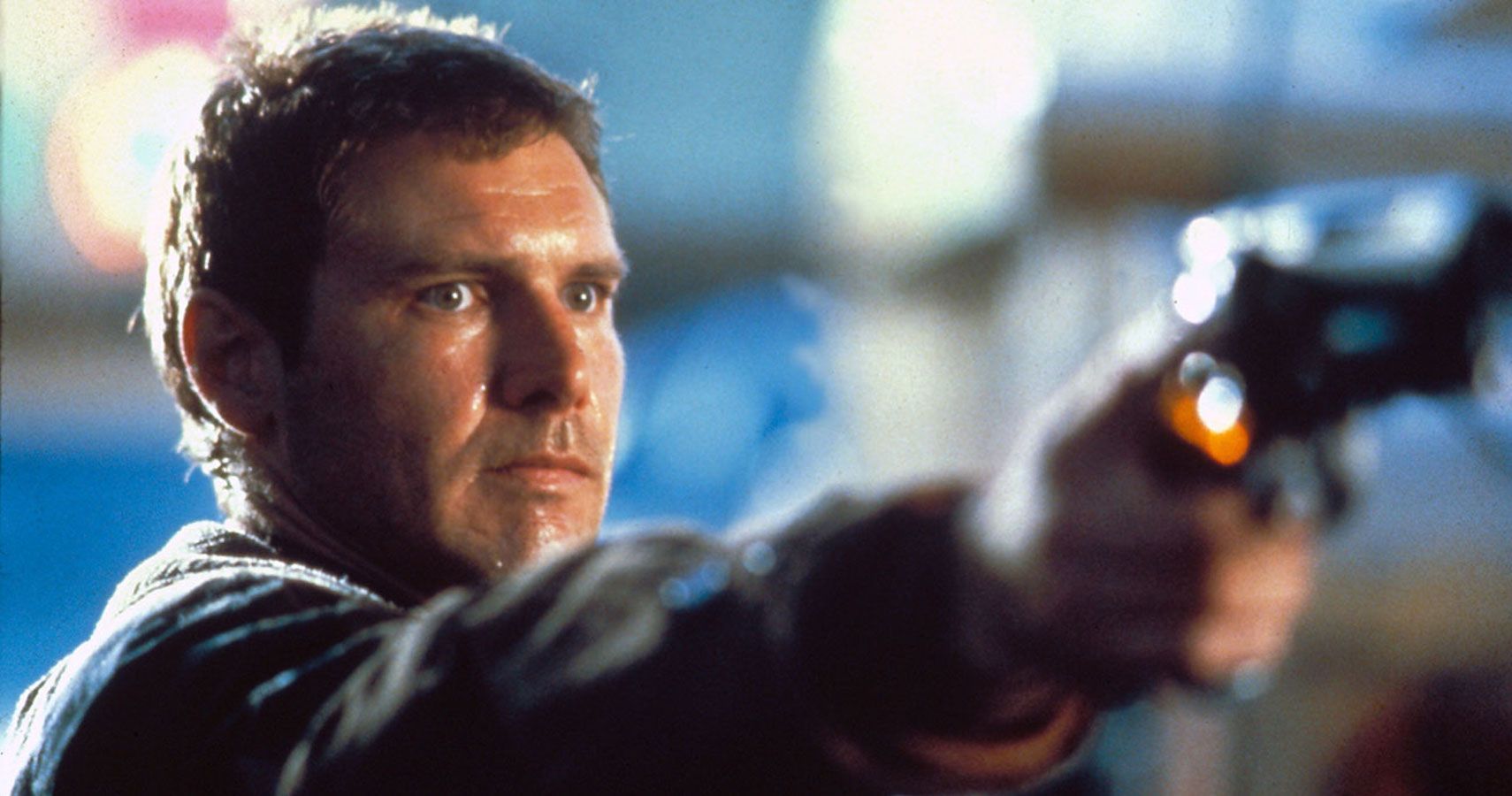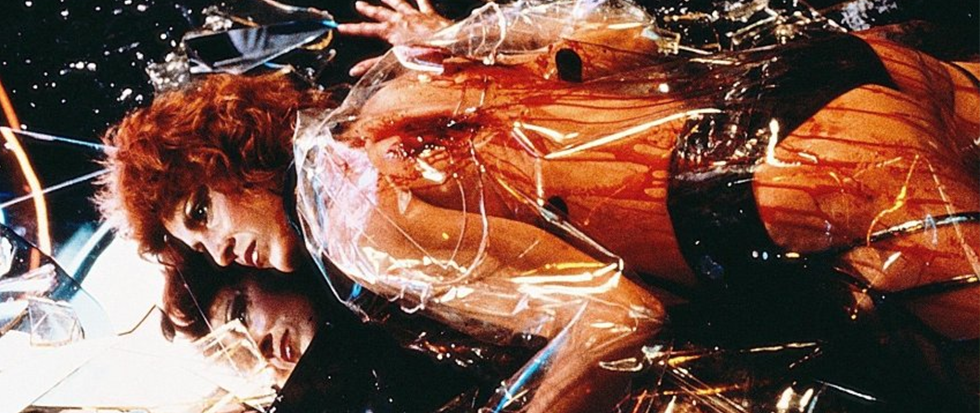Ridley Scott’s 1982 classic, “Blade Runner”, loosely adapted from the novel “Do Androids Dream of Electric Sheep?” is a masterful display of how the concept of Mise en Scene is to be used within film. Through the essay following, i will be exploring how Scott utilises the cinematic concept to build atomsphere in a single scene.

The scene under analysis is Zhora (Joanna Cassidy, Lee Pulford)’s retirement at the hands of Blade Runner Rick Deckard (Harrison Ford), about halfway into the film’s runtime. Also in this analysis i may call reference to earlier and later scenes in the film to talk about specific cinematic parallels and mirrored metaphors, bookends etc.
This scene’s most iconic part starts as Zhora escapes her workplace, as her attempt on Deckard’s life is halted by the presence of her fellow dancers. Rick chases her as she attempts to flee through the crowded Los Angeles streets, before taking her out in a dramatic slo-mo sequence as she falls through a shop display window.
Every part of this scene’s presentation goes into a palpable atmosphere, the likes of which we only see once again in the runtime of the film; during Roy Batty’s death at its climax. The parallels drawn between these two scenes exist for the sole purpose of demonstrating the fear and panic of a life still ending. That is a concept we see play out a few times, bar the death of Leon, who is given nary a second to ponder his fate.
With Zhora though, we experience all of it. The initial panic, represented by the blaring ambient sounds of the city, the trampling march of footsteps, and the bark of Deckard and his gun. We are shown just how overwhelming that chase is through the technicolour neon-tainted haze of city smog, everything in the scene is coming to a ground swell.
Zhora, as a static character as well, is showing so much in the scene. Her clear plastic coat, for example, represents not only her inherent artificial nature as a replicant in the world of Blade Runner, but her role as a sex worker in the society of Los Angeles. This is further supplemented by her presence in a shop display window at the time of her retirement, exemplifying that part of her character.
And then, the infamous slow motion shot starts, as Zhora begins to die.

The way she stumbles through the shattering glass may look somewhat awkward, but the glass itself shattering in slow motion appears in a way to bring clarity, or reflection, to Zhora’s final moments. The music goes a long way too, as rather than a mellow death knell, or a terrified beat of panic, we are accompanied for Zhora’s death by a smooth number, incorporating jazz elements, simultaneously referencing the noir roots of the movie and emulating the mellow, early-synth tones specifically of Pink Floyd’s 1975 album, “Wish You Were Here”, as well as similar prog projects which came before the movie.
These creative choices surrounding Zhora’s retirement exist for one main reason; it’s supposed to represent the changes we see in mentality during the approach to death, especially so in replicants. Zhora accepts her fate, as it would have come soon anyway, like the Mayfly, which certain shots directly mirror using her contorted body and glass-like coat. She dies among her own kind in a sense, in the fake snow, in a shop display window, amongst similarly skimpy mannequins with glowing neon rings bordering their necks. This angelic imagery has a secondary and tertiary meaning of course; as not only the mannequins being ‘fake humans’ is a direct point of comparison, and a sick kind of kinship to Zhora, but the placements of the neon can be interpreted as the halos of her angels coming to rescue her spirit, or the nooses of her fellow minority, under the admonishment of Blade Runners and Tyrell’s work.
Many of the features on display here, not only the religious symbolism, or the strangely calm atmosphere, or the juxtaposed music contribute to this scene, but another in the film. During the death of Roy Batty. During that scene, we see him not only sending a dove to the heavens, but having a stigmata pierced through one of his hands at the moment of his death. And whilst that was a bit of a tangent, the similarities between the two scenes show a fundamental part of the themes of the film in relation to replicants; the tranquility of death, and the ambiguity of the soul of an android.
Especially upon repeat viewings, that parallel drawn between the powerful deaths of the two characters makes the atmosphere so much more tangible, and creates a greater feeling of Mise en Scene.

"In the cramped and dripping darkness her eyes are turning glassy. The intervals between the FALLING DROPS OF WATER accentuate the silence until there is no dripping and even the gurgling gutters have receded into silence as the life drains out of Zhora's face until it's frozen, dead."
-Blade Runner Screenplay, David Peoples and Hampton Fancher
